6 Opioids, Stimulants, Depressants, and Inhalants
Introduction
Opioids, stimulants, and depressants are the top three drugs that have shown to cause addiction in the user. They are the most widely used and prescribed medications today. The impacts on the central nervous system make the use of these drugs concerning for the user and communities and families that are impacted when these drugs are used or misused. Your familiarity and knowledge about these drugs can help advocate and educate for change and prevention that is needed to stop the crisis that is arising around these drugs.
Learning Objectives
- Understand and describe what opioids are.
- Understand and describe what stimulants are.
- Understand and describe what depressants are.
- Understand the implications of use and misuse of opioids, stimulant and depressants.
- Explain how opioids, stimulants, depressants, and inhalants work in the brain and body.
- Understand how opioids, stimulants, depressants, and inhalants are used and misused.
Image 6.1 – Syringe with Brown Liquid
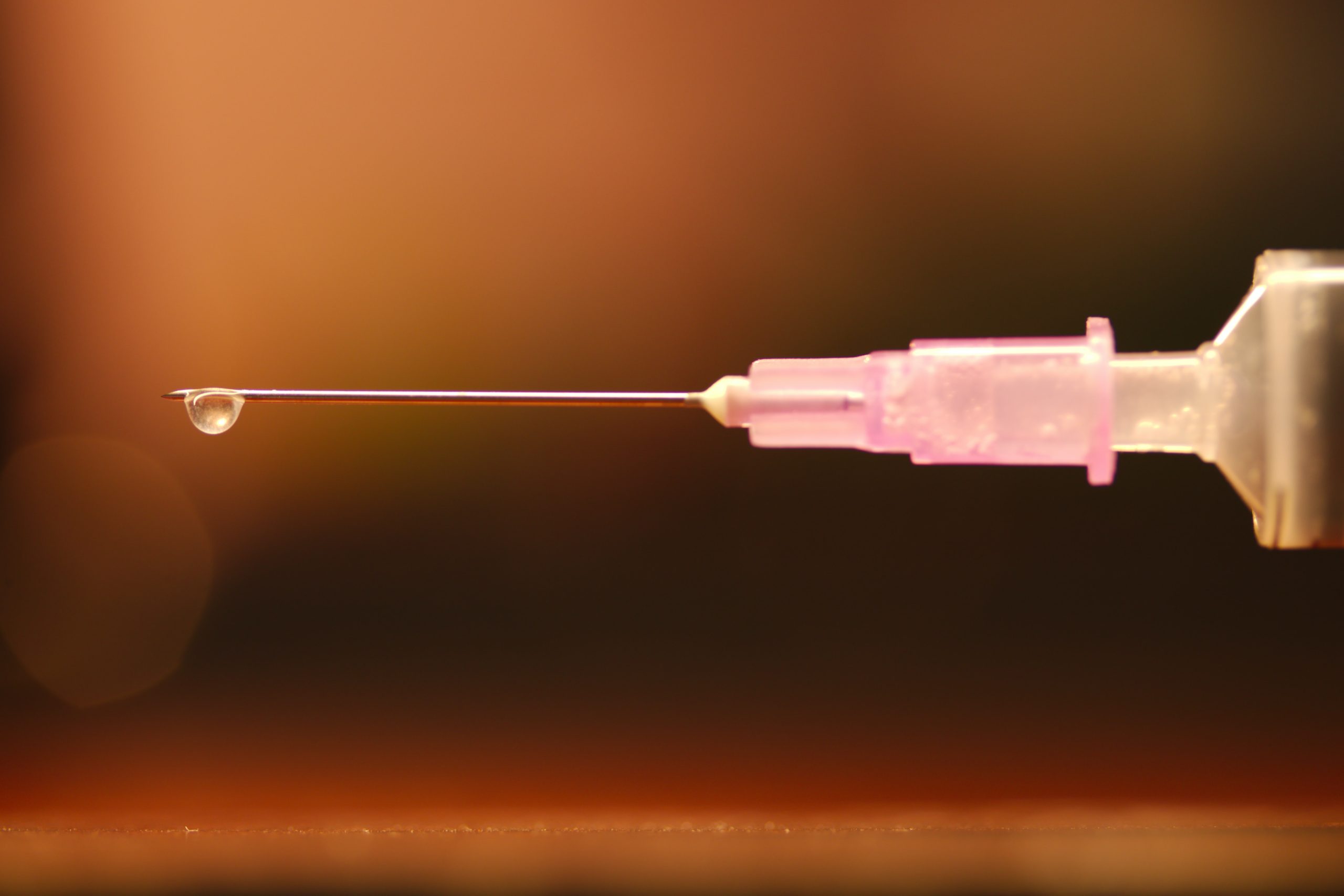
Learning Content
Opioids
History Of Opioids
- 1911 to 1990s: Federal Drug Administration (FDA) allowed opioids to be used to treat acute pain and cancer pain.
- 1995: FDA approves Oxycontin.
- 1998: FDA approves Fentanyl.
- 2003: FDA sends warning letters to “Big Pharma” about misleading opioid information.
- 2014: Naloxone is approved to help address opioid overdose concerns.
- 2016 to present: FDA responds to concerns around the opioid crisis/epidemic.(USFDA, Timeline of Selected FDA Activities and Significant Events Addressing Opioid Misuse and Abuse, 2021)
Opioid Forms and Types of Use
Opioids are a class of drugs that include legally prescribed pain relievers, illegal drugs, and synthetic opioids. Most prescribed opioids are used to treat moderate to severe pain but can also be prescribed for coughs and diarrhea. Other opioids can make people feel relaxed or euphoric, causing the drugs to be used for nonmedical reasons. Opioids can be taken orally, by suppository, injected via a needle, inhaled, applied dermally on the skin.
Pain relievers legally prescribed by a healthcare provider:
- Oxycodone Drug Fact Sheet: Oxycodone
- Hydrocodone Hydrocodone (Oral Route) Description and Brand Names
- Codeine Codeine (Oral Route) Description and Brand Names
- Morphine Drug Fact Sheet: Morphine
Illegal Opioids:
- Heroin 10 Facts About Heroin
Synthetic Opioids:
Critical Thinking
Review one of the fact sheets from the pain reliever category and both fact sheets in the illegal and synthetic opioid category. What do you notice about these drugs? What risks are you more aware of when it comes to using these drugs?
Opioids’ Effects on the Body
Opioids interact with opioid receptors on nerve cells in the brain and body. The opioids bind to opioid receptors in the brains, spinal cord, and other organs in the body. Opioids block pain signals by releasing large amounts of dopamine throughout the body encouraging the desire to take more to repeat the dopamine high or drug high. Opioids make you feel happy and relaxed. The feeling of euphoria that users get when taking opioids is something that opioid users desire. There are adverse effects with opioid use. They include drowsiness, confusion, nausea, constipation, slowed breathing, overdose, or death. It is important to understand all of the risks associated with use of these drugs, and, if prescribed, to use them under the guidance of a medical professional.
Use, Misuse, and Overuse
Having a mild headache or a muscle pain or ache can often be managed with over-the-counter pain relievers (acetaminophen or ibuprofen), but when your pain becomes more severe, you may need something stronger. An opioid prescription obtained from your doctor can help with the pain. Prescription use is generally safe when taken for a short time. When opioids are taken in a way other than prescribed—if a person takes another person’s prescription or takes the opioid to get a “high”—concerns arise with use. Unfortunately, prescription opioid use can lead to addiction concerns.
Opioids can be misused because the euphoria they create—along with the pain relief they provide—may cause individuals to want to use the drug more. Therefore, it is critical to understand that using opioids, even prescribed medically, can lead to dependence, addiction, overdose, and other harmful incidents, and even death.
Critical Thinking
Look at the graphs below. What do you notice about the rise of Opioid deaths? Look back at the fact sheets above to gain more information on why the U.S. is seeing the increase in use and deaths associated with opioid use, misuse, and addiction.
Table 6.1 – Three Waves of the Rise in Opioid Overdose Deaths
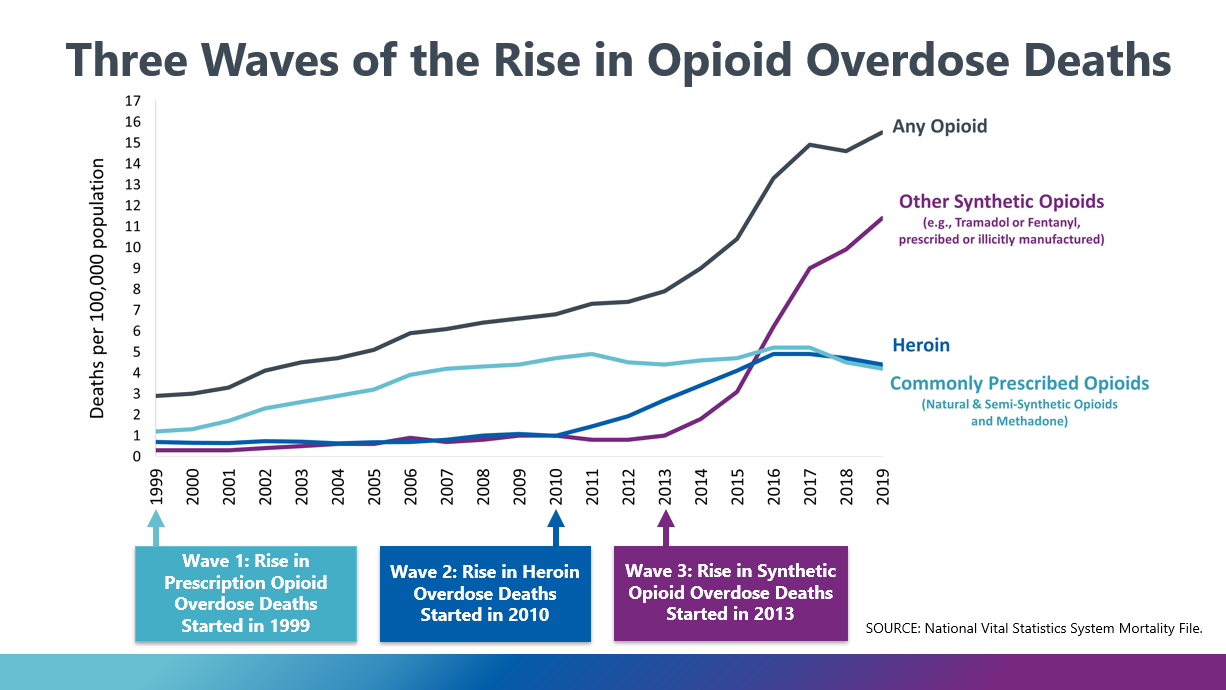
Table 6.2 – National Drug-Involved Overdose Deaths 1999-2019
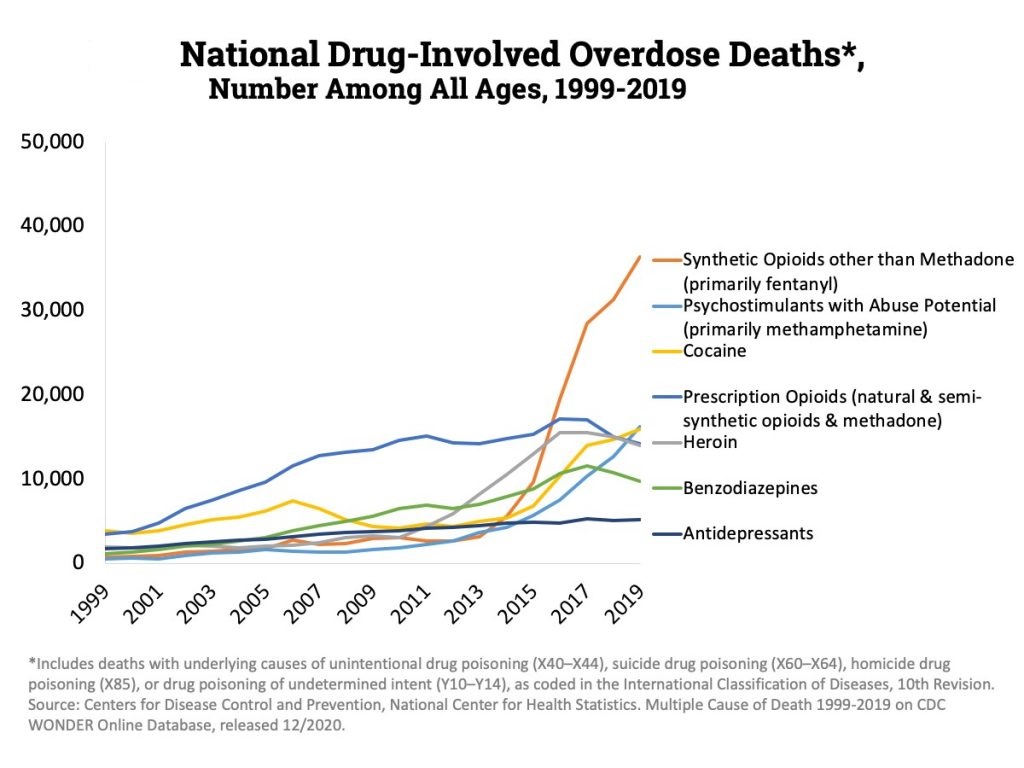
Watch the following video related to the opioid crisis:
Video 6.1 – Addicted to Death
Critical Thinking
After watching this video, what thoughts come to your mind about drug use and addiction risk? Why in the United States do we hear so much about the Opioid Crisis?
Lifespan Considerations
Opioid use remains a concern throughout your life. Accidental misuse can happen at any age, but as you age, the risk increases—you may be taking more multiple prescriptions and there is risk with misuse.
If you are using opioids by injection, sharing of needles is a concern. HIV risk from unprotected sex is a concern with opioids injection users. Treatment can be long-term, costly, and necessary to recover from opioid addiction. The most concerning with use of opioids is risk of death from overdose. The long-term implications and concerns will take a toll on the life of a user.
Image 6.2 – Pills and a Spoon
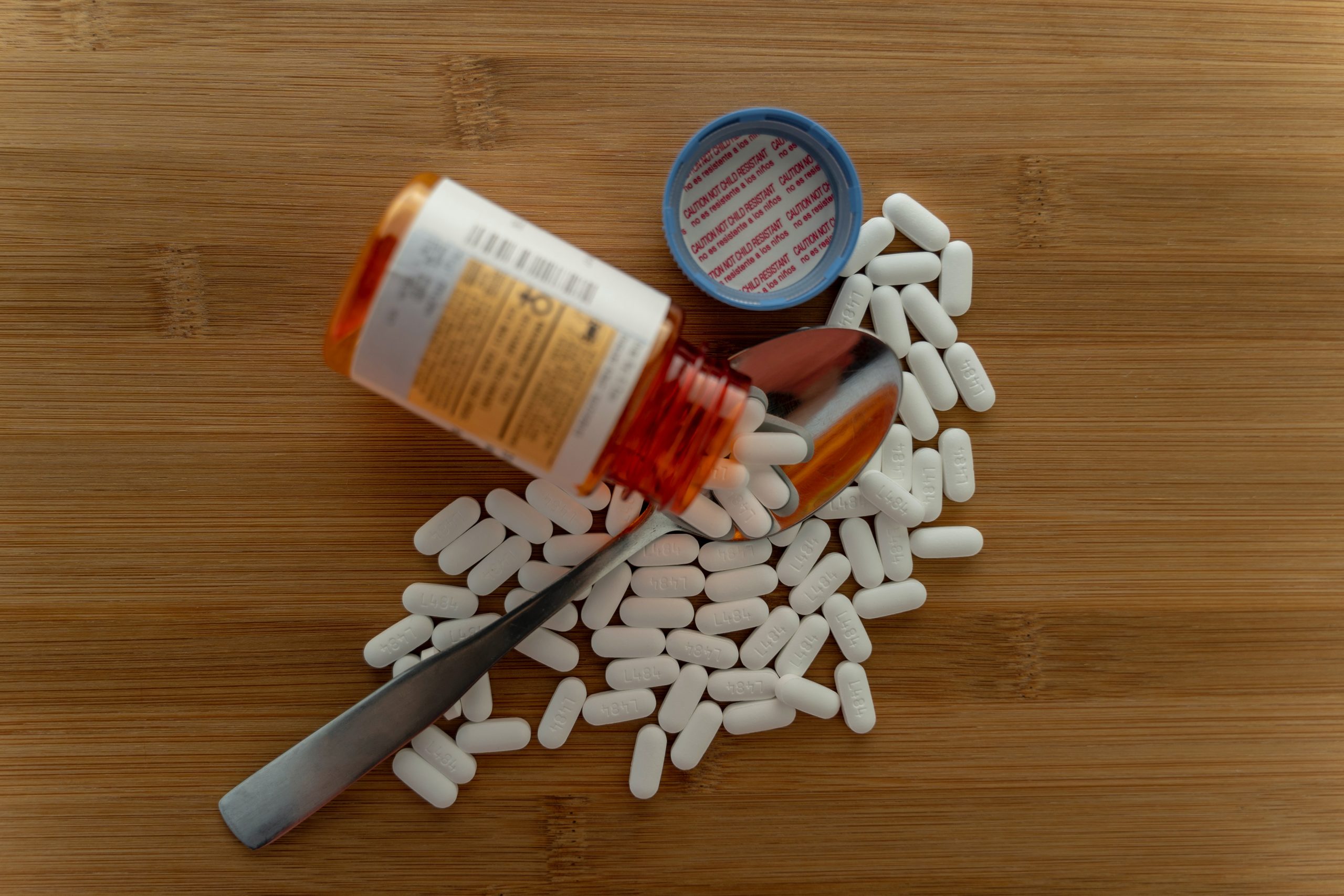
Stimulants
History and Background
Amphetamines were the first synthetic stimulant discovered in the 1930s. They were first used to treat nasal congestion. Eventually they were used to treat other conditions, such as alcoholism, obesity, depression, hyperactivity, and more.In the 1960s crystal methamphetamine (crystal meth) came on the scene, followed by widespread amphetamine misuse. In the 1970s methamphetamine use was prevalent with few, if any, laws in place to regulate the amount prescribed or used illegally.
Stimulant Forms and How they are Used
Stimulants are administered orally, by injection, or through inhalation. They are generally used to treat ADHD (Attention Deficit Hyperactivity Disorder), uncontrolled issues with deep sleep; these drugs can increase alertness, attention ,and energy, and are often used by college students at the end of the semester to help them stay awake.
Below is a list of legal and illegal stimulants.
Legal Stimulants:
- amphetamines Amphetamines
- methylphenidate Methylphenidate
- diet pills/diet aids Office of Dietary Supplements (ODS)
- dietary supplements for weight loss
- caffeine
Illegal Stimulants:
- methamphetamine 10 Facts About Methamphetamines
- cocaine; 10 Facts About Cocaine
- spice/K2 Synthetic Cannabinoid Fact Sheet
- bath salts Fact Sheet: Synthetic Cathinones
Critical Thinking
Which of the above stimulants (if any) do you use the most? Review the factsheet for that stimulant. Then look at one that you know is being used in your community. What concerns you about the use of that stimulant?
Stimulants’ Effects on the Body
Stimulants increase the chemicals and in the brain. Stimulants provide a “rush” in the body that activates the central nervous system and speeds up communication. Stimulants, in general, activate or excite the nervous system. They also increase energy in the body. Stimulant drugs work by increasing the release of neurotransmitters in the body. Stimulants tend to create effects that can be mild to intense, depending upon the stimulant being used. Individuals taking stimulants have an increased sense of well-being, high energy levels, increased confidence, concentration, and alertness along with a reduced need for sleeping and eating. Stimulants provide that “adrenaline” rush that one might get naturally from winning the big game, climbing a mountain, riding a roller coaster, but unfortunately, with continued use, that rush is harder to achieve when using drugs.
Use, Misuse, and Overuse
Stimulants are used to treat depression, morbid obesity, narcolepsy, chronic lethargy, and (attention-deficit/hyperactivity disorder). All this energy that the user experiences comes from the body’s reserves and must be recharged. The “recharging” period is difficult, and people often experience an extreme version of the conditions they were trying to avoid by taking the stimulant in the first place. Continued fatigue, lack of concentration, depression, and low energy drives. This drives many to take more of the stimulant, rather than allowing their body to recover from the first high, and to repeat in an effort to avoid the low. Given the addictive nature of most stimulants, dependence follows pretty quickly. As with many drugs, including stimulants, misuse can happen when you do not take the stimulant as prescribed, you take someone else’s stimulant prescription, or you take the stimulant to get high.
Check Your Knowledge
Lifespan Considerations
When using stimulants it is important to consider the type of stimulant and its impact it could have on your brain and body. Stimulants affect everyone differently. One person can drink caffeine all day and sleep at night, and the next person can drink one cup and can’t sleep at all that evening. It is important to understand how stimulants impact you.
The main concerns with long-term stimulant use include impairments in cognitive areas, reaction time, memory, working memory and executive control in the brain, as well as addiction that happens quickly and can often be difficult to reverse.
Critical Thinking
Have you ever tried to give up your coffee or your diet coke? What happened?
Depressants
History and Background
Alcohol was one of the first depressants ever used. Many other natural depressants, like opium, have roots in ancient origins. Other forms of depressant and antidepressant drugs started being used in the 1960s, with many newer antidepressants coming to the market in the 1980s. Today antidepressants are one of the most widely used and prescribed drugs.
Depressant Forms and How they are Used
Depressants are used therapeutically to induce sleep, relieve anxiety, relax or reduce muscle spasms, and prevent seizures. Depressants can also cause amnesia, reduce reaction time, impair mental health and judgement, and cause confusion. Long term use produces physical and psychological dependence, and withdrawal from depressants use can be life-threatening.
Below is a list of legal and illegal depressants.
Legal Depressants:
- barbiturates
- benzodiazepines
- sedative hypnotics Sleep Disorder (Sedative-Hypnotic) Drug Information | FDA
- meprobamate
- methaqualone
Illegal Depressants:
Critical Thinking
Why is GHB such a concern in society today?
Use, Misuse, and Overuse
Depressants are used to treat anxiety, depression, insomnia, obsessive compulsive-disorder ,and seizures. Depressants come in pill, capsule, and liquid form and are taken orally. Depressants increase the neurotransmitter which leads to reduced brain activity and a relaxing effect for the user. As with many drugs misuse can happen when you do not take the depressant as prescribed, you take someone else’s depressant prescription, or you take the depressant to get high.
Lifespan Considerations
Withdrawal from depressant use can be severe and potentially life-threatening. Individuals taking depressants can develop health problems and with long term use may fail to meet responsibilities at work, school, and home. Monitoring the use of prescribed depressants is important.
Inhalants
Image 6.3 – Picture of Household Inhalants
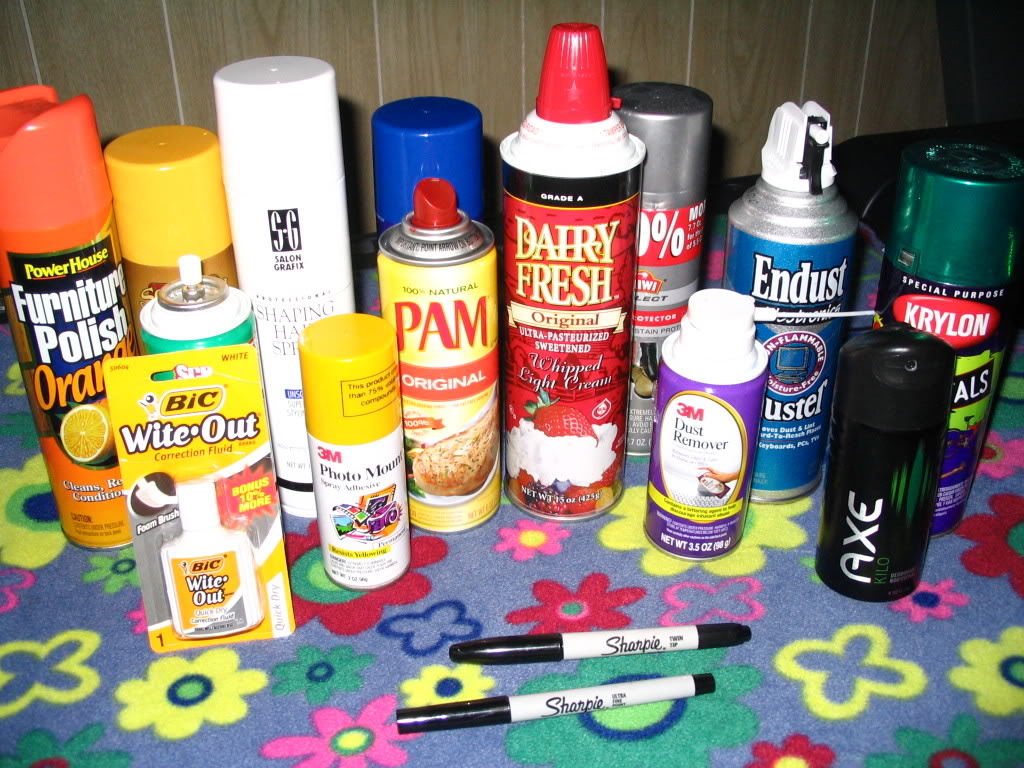
History and Background
Inhalants were first discovered in the 1799 but were not widely used until the 1800s. Nitrous oxide, ether and chloroform were first used as anesthetics. Nitrous oxide was also used in surgical procedures and patient operations as an anesthetic, and is still used today primarily as “laughing gas” used to calm people during dental procedures, to calm people during pregnancy labor, and other regulated uses. Inhalants became widely used recreationally between the 1940’s and 1960’s and are still pervasively used by adolescents today.
Inhalant Forms and How they are Used
Inhalants are invisible, volatile chemicals found in common household, industrial, and medical products. Inhalants are typically volatile solvents, an aerosols, or gases. These chemicals produce vapors that, when inhaled, induce psychoactive or mind altering effects.
Below is a list of legal and illegal inhalants.
Legal Inhalants
- Nitrous Oxide is used during medical procedures to relax an individual; it is typically used for dental procedures.
- Nitrites are prescribed to help relieve chest pain.
Commonly Misused Inhalants, which includes solvents, aerosols and gases
- sharpie markers and pens
- rubber cement
- keyboard cleaner
- hairspray
- cooking spray
- correction liquid
- gasoline/kerosene (NIDA, Inhalants drugFacts, 2020)
Inhalants’ Effects on the Body
Inhalants damage the brain and can lead to mild brain impairments or severe dementia with prolonged use. Individuals may also experience nausea, loss of muscle control, have vision impairment, cardiac arrest, have damage to their internal organs, and even death because using inhalants speeds up the heart. Inhalants depress the central nervous system, while nitrites dilate and relax blood vessels.
Use, Misuse, and Overuse
Inhalants are easy to obtain and typically inexpensive. Addiction with inhalants is very concerning because the typical user is under the age of 18. Most inhalants are breathed in through the mouth or nose. Often they are sniffed, snorted, huffed, or inhaled from a plastic or paper bag. Huffing, sniffing, snorting, and popping are all ways people use inhalants. If you are concerned about someone that is using inhalants look for these signs; strange odors in their breath, irritated eyes and nose, residue or paint on the fingers, and sores in the nose and mouth. These products are common household, industrial, and medical products so many people assume that they are safe, but when the products are inhaled, they can be detrimental to the user.
Lifespan Considerations
Many inhalants speed up the heart rate and can cause the heart to beat irregularly. Sometimes speeding up the heart can cause the heart to stop, leading to death. This can happen with one use, which makes inhalant use such a concern (Get Smart About Drugs, Drug fact sheets, 2021).
Check Your Knowledge
Go back and look at some of the resources for the various drugs mentioned in this section. Use the resources to answer the following questions.
Supplemental Resources
American Society of Health-System Pharmacists, Inc. (2020, February 15). Amphetamine [Drug information]. AHFS Consumer Medication. https://medlineplus.gov/druginfo/meds/a616004.htm
Anxiety and Depression Association of America (2019, July). Medication options. https://adaa.org/find-help/treatment-help/medication-options
Arablouei, R., & Abdelfatah, R. (2019). A history of opioids in America. https://www.npr.org/2019/04/04/709767408/a-history-of-opioids-in-america
Baydala L. (2010). Inhalant abuse. Paediatrics & child health, 15(7), 443–454 https://www.ncbi.nlm.nih.gov/pmc/articles/PMC2948777/
Cleveland Clinic. (2016, February 23). Attention deficit hyperactivity disorder (ADHD): Stimulant therapy. https://my.clevelandclinic.org/health/treatments/11766-attention-deficit-hyperactivity-disorder-adhd-stimulant-therapy
Cleveland Clinic. (2019, October 11). Inhalant abuse. https://my.clevelandclinic.org/health/diseases/15742-inhalant-abuse
Drug Enforcement Administration. (2020, April). Drug fact sheet: Depressants. https://www.dea.gov/sites/default/files/2020-06/Depressants-2020.pdf
Drug Enforcement Administration. (2020, April). Drug fact sheet: Inhalants. https://www.dea.gov/sites/default/files/2020-06/Inhalants-2020.pdf
Drug Policy Alliance. (2016, September). Fact sheet: Fentanyl and synthetic opioids. https://drugpolicy.org/sites/default/files/Synthetic-Opioids-Fact-Sheet.pdf
Drug Policy Alliance. (2018, March). 10 facts about heroin. https://drugpolicy.org/sites/default/files/heroinfacts_03_18_0.pdf
Get Smart About Drugs. (2021). Drug fact sheets. https://www.getsmartaboutdrugs.gov/publication/drug-fact-sheets
Get Smart About Drugs. (n. d.). True Stories. https://www.getsmartaboutdrugs.gov/consequences/true-stories
Griebel, G., & Holmes, A. (2013). 50 years of hurdles and hope in anxiolytic drug discovery. Nature Reviews Drug Discovery, 12(9), 667–687. https://doi.org/10.1038/nrd4075
Just Think Twice. (n.d.). True Stories. https://www.justthinktwice.gov/true-stories
Lakhan, S. E., & Kirchgessner, A. (2012). Prescription stimulants in individuals with and without attention deficit hyperactivity disorder: Misuse, cognitive impact, and adverse effects. Brain and Behavior, 2(5), 661–677. https://doi.org/10.1002/brb3.78
Lyden J. & Binswanger I. A. The United States opioid epidemic. Semin Perinatol, 43(3), 123-131. http://doi.org/10.1053/j.semperi.2019.01.001
Mayo Clinic. (n.d.). Drugs and stimulants. https://www.mayoclinic.org/drugs-supplements
MedlinePlus. (2021, December 14). Dietary supplements. National Library of Medicine. https://medlineplus.gov/dietarysupplements.html
MedlinePlus. (2021,. August 2). Inhalants. https://medlineplus.gov/inhalants.html
National Institute of Diabetes and Digestive and Kidney Diseases. (n.d.). “Opioids.”LiverTox: Clinical and Research Information on Drug-Induced Liver Injury. https://pubmed.ncbi.nlm.nih.gov/31643200
National Institute on Drug Abuse. (2010). Inhalant abuse. https://casaa.unm.edu/ctn/ctn%20mod%20tool%20kit/General%20Information/Inhalants/NIDA%20Research%20Report%20-%20Inhalants.pdf
National Institute on Drug Abuse. (2018, March 6.) Prescription CNS depressants drugFacts. https://nida.nih.gov/publications/drugfacts/prescription-cns-depressants
National Institute on Drug Abuse. (2019, May 16). Methamphetamine drugFacts. https://nida.nih.gov/publications/drugfacts/methamphetamine
National Institute on Drug Abuse. (2020, May 20). What are the short- and long-term effects of inhalant use? https://nida.nih.gov/publications/research-reports/inhalants/what-are-short-long-term-effects-inhalant-use
The National Institute for Occupational Safety and Health. (2018, April 24). Nitrous oxide. Centers for Disease Control and Prevention. https://www.cdc.gov/niosh/topics/nitrousoxide/default.html
Trickey, E. “America’s 19th century opiate addiction.” The Smithsonian. https://www.smithsonianmag.com/history/inside-story-americas-19th-century-opiate-addiction-180967673/
U. S. Food and Drug Administration. (2017, November 29). What you need to know about dietary supplements. https://www.fda.gov/food/buy-store-serve-safe-food/what-you-need-know-about-dietary-supplements
World Health Organization. (n. d.). Drugs (psychoactive). https://www.who.int/health-topics/drugs-psychoactive
References
National Center for Injury Prevention and Control. (2021, March 18). Three waves of the rise in opioid overdose deaths [Infographic]. Centers for Disease Control and Prevention. Retrieved July 27, 2021, from https://cdc.gov/drugoverdose/resources/graphics/overdose.html
Just Think Twice. (n.d.). Amphetamines. Retrieved July 27, 2021, from https://www.justthinktwice.gov/drugs/amphetamines
National Institute on Drug Abuse. (2021, January 29). Overdose death rates. Retrieved July 27, 2021, from https://nida.nih.gov/drug-topics/trends-statistics/overdose-death-rates
NIDA. (2020, April 16). Inhalants drugFacts. https://nida.nih.gov/publications/drugfacts/inhalants
NIH. (2021). Office of Dietary Supplements. https://ods.od.nih.gov/
sfm004. (2016, November 28). Addicted to Death [Video]. YouTube. https://youtu.be/VvLgfryJRLQ
U.S. Food and Drug Administration. (2021, July 7). Timeline of selected FDA activities and significant events addressing opioid misuse and abuse. Retrieved July 27, 2021, from https://www.fda.gov/drugs/information-drug-class/timeline-selected-fda-activities-and-significant-events-addressing-opioid-misuse-and-abuse
Norepinephrine is a chemical that functions in the brain and body as a hormone and a neurotransmitter.
Dopamine is a neurotransmitter that provides reinforcement for rewarding behaviors.
Attention Deficit Disorder
Attention Deficit Hyperactivity Disorder
a neurotransmitter that sends chemical messenger through the brain and nervous system; GABA regulates communication between brain cells



